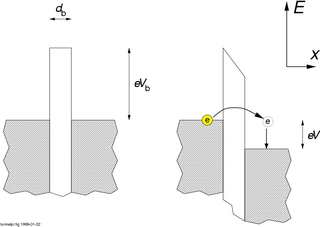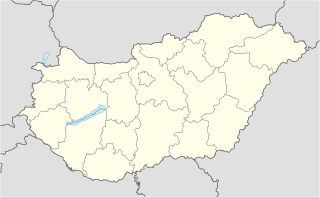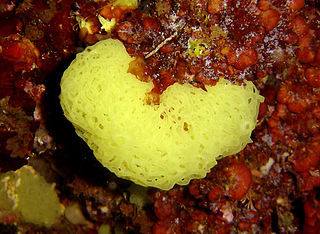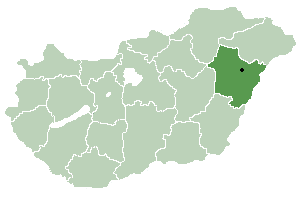
The Uralic languages form a language family of 38 languages spoken by approximately 25 million people, predominantly in Northern Eurasia. The Uralic languages with the most native speakers are Hungarian, Finnish and Estonian, while other significant languages are Erzya, Moksha, Mari, Udmurt, Sami, and Komi, spoken in northern regions of Scandinavia and the Russian Federation.
In cryptography, Lucifer was the name given to several of the earliest civilian block ciphers, developed by Horst Feistel and his colleagues at IBM. Lucifer was a direct precursor to the Data Encryption Standard. One version, alternatively named DTD-1, saw commercial use in the 1970s for electronic banking.

Hajdú-Bihar is an administrative county in eastern Hungary, on the border with Romania. It shares borders with the Hungarian counties Szabolcs-Szatmár-Bereg, Borsod-Abaúj-Zemplén, Jász-Nagykun-Szolnok and Békés. The capital of Hajdú-Bihar county is Debrecen. Together with Bihor County in Romania it constitutes the Biharia Euroregion.

In mesoscopic physics, a Coulomb blockade (CB), named after Charles-Augustin de Coulomb's electrical force, is the decrease in electrical conductance at small bias voltages of a small electronic device comprising at least one low-capacitance tunnel junction. Because of the CB, the conductance of a device may not be constant at low bias voltages, but disappear for biases under a certain threshold, i.e. no current flows.

Hajdúszoboszló is a town in Hajdú-Bihar county, Hungary, 19 kilometres southwest of county seat Debrecen. It is the third largest town in Hajdú-Bihar county.

Clathrina is a genus of calcareous sponge in the family Clathrinidae. Several species formerly in Clathrina were transferred to the newly erected genera Arturia, Ernstia, Borojevia, and Brattegardia in 2013. The name is derived from the Latin word "clathratus" meaning "latticed".
Arylsulfatase (EC 3.1.6.1, sulfatase, nitrocatechol sulfatase, phenolsulfatase, phenylsulfatase, p-nitrophenyl sulfatase, arylsulfohydrolase, 4-methylumbelliferyl sulfatase, estrogen sulfatase) is a type of sulfatase enzyme with systematic name aryl-sulfate sulfohydrolase. This enzyme catalyses the following chemical reaction

Bagamér is a village in Hajdú-Bihar county, in the Nyíradony District of Hungary.

Fülöp is a village in Hajdú-Bihar county, in the Northern Great Plain region of eastern Hungary.

Újszentmargitahttps://hu.wikipedia.org/wiki/%C3%9Ajszentmargita is a village in Hajdú-Bihar county, in the Northern Great Plain region of eastern Hungary.

Evolutionary physiology is the study of the biological evolution of physiological structures and processes; that is, the manner in which the functional characteristics of individuals in a population of organisms have responded to natural selection across multiple generations during the history of the population. It is a sub-discipline of both physiology and evolutionary biology. Practitioners in the field come from a variety of backgrounds, including physiology, evolutionary biology, ecology, and genetics.

Polgár is a city in the administrative county of Hajdú-Bihar in eastern Hungary.

Homosclerophorida is an order of marine sponges. It is the only order in the monotypic class Homoscleromorpha. The order is composed of two families: Plakinidae and Oscarellidae.

David Hajdu is an American columnist, author and professor at Columbia University Graduate School of Journalism. He was the music critic for The New Republic for 12 years and is music editor at The Nation.

Homotherini is an extinct tribe of carnivoran mammals of the family Felidae. The tribe is commonly known as scimitar-toothed cats. These saber-toothed cats were endemic to North America, Europe, Asia, Africa, and South America from the Miocene to Pleistocene living from c. 23 Ma until c. 12,000 years ago.

Dictyoceratida is an order of sponges in the subclass Ceractinomorpha containing five families. Along with the Dendroceratida, it is one of the two orders of demosponges that make up the keratose or "horny" sponges, in which a mineral skeleton is minimal or absent and a skeleton of organic fibers containing spongin, a collagen-like material, is present instead.

Arturia is a genus of calcareous sponge in the family Clathrinidae which contains 14 species. It is named after Arthur Dendy, a prominent researcher of calcareous sponges. It was renamed Arturia in 2017 because the name Arthuria was already assigned to a genus of molluscs.
Biemnida is an order of demosponges in the subclass Heteroscleromorpha.
Ionic Coulomb blockade (ICB) is an electrostatic phenomenon that appears in ionic transport through mesoscopic electro-diffusive systems and manifests itself as oscillatory dependences of the conductance on the fixed charge in the pore.











